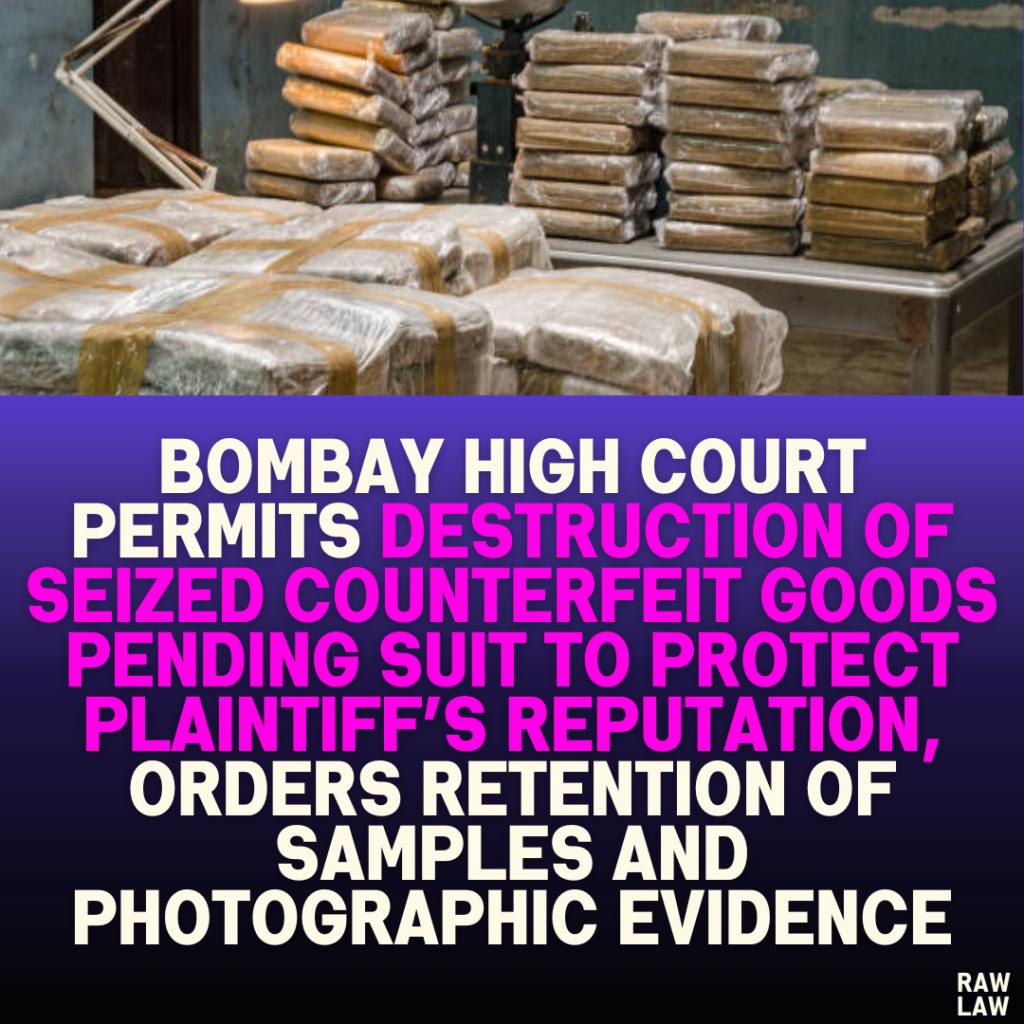Court’s Decision
The Bombay High Court allowed the Plaintiff to destroy infringing goods seized under a prior ex-parte order, with the condition to retain a few samples as evidence for the ongoing suit. The Court also directed the Plaintiff to take photographs of the products retained and file an affidavit attaching these photographs within four weeks.
Facts
The Plaintiff, alleging trademark infringement, sought an order to destroy goods seized by the Additional Special Receivers during the execution of an ex-parte ad-interim order dated December 21, 2023. The infringing goods, currently stored in the Plaintiff’s warehouse, were deemed to be counterfeit and posed a risk to the Plaintiff’s business reputation.
Issues
- Whether the Plaintiff could obtain permission to destroy infringing goods pending the final resolution of the case.
- Whether retaining samples for evidence would suffice in safeguarding both the Plaintiff’s and Defendant’s interests.
Petitioner’s Arguments
The Plaintiff argued that the infringing goods seized during the execution of the ex-parte order were stored in their premises and continued to affect their commercial interests. Given that the goods were counterfeit, the Plaintiff sought permission to destroy them, suggesting retention of a few samples for evidentiary purposes in the suit.
Respondent’s Arguments
The Respondents, represented by “John Doe,” were served notice of the application but did not appear to oppose the motion.
Analysis of the Law
The Court examined the legal principles around the preservation and destruction of evidence, particularly in intellectual property cases where counterfeit goods are involved. It balanced the need for evidence retention against the Plaintiff’s right to protect its brand and reduce the harm caused by counterfeit products.
Precedent Analysis
The Court referred to earlier cases where interim relief in IP disputes permitted the destruction of infringing goods, provided that adequate samples were retained as evidence. This approach aimed to balance judicial oversight with the claimant’s need to mitigate ongoing harm.
Court’s Reasoning
The Court found the Plaintiff’s request reasonable, as the continued presence of counterfeit goods could harm the Plaintiff’s business and reputation. By retaining a few samples and requiring photographic evidence of the items before destruction, the Court ensured that due process was observed while also limiting potential damage to the Plaintiff’s interests.
Conclusion
The Court granted the Plaintiff permission to destroy the infringing goods, provided that samples were retained for evidentiary use, and ordered the Plaintiff to submit an affidavit with photographic documentation within four weeks.
Implications
This decision underscores the Court’s approach to balancing intellectual property rights with evidentiary requirements, particularly in cases where counterfeit goods are involved. The ruling reaffirms that courts may permit the destruction of infringing goods to protect claimants’ interests, provided adequate documentation and samples are maintained for the trial. This sets a precedent for similar IP-related disputes, emphasizing the Court’s stance on mitigating potential harm to rights holders from counterfeit products.



